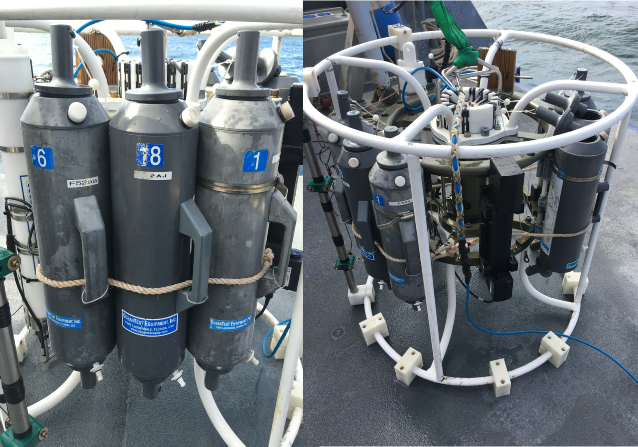




To obtain results for various physical, chemical and biological parameters, a CTD
Rosette consisting of 6 Niskin Bottles and further probes recording for temperature,
salinity and fluorescence was used. Four Niskin bottles were used at two sites, and
three used at one site, at each site one Niskin bottle was closed at the deepest
point, and one at the surface. The other one or two bottles were closed at points
of interest within the water column (according to the data gathered on the CTD descent).
Using the on-

The ADCP was switched on upon arrival at the station, and off when leaving the station, to get a temporal profile of current. The ADCP was also used to obtain a spatial transect between stations.




- The CTD was successfully deployed at each station. However, all of the surface readings had to be judged by eye by those who deployed the CTD, so they weren’t at constant depths. Additionally, the depths of each station were different, so no constant depth was sampled each time, which could make comparisons difficult. Additionally, the strong currents at some depths may have moved the CTD, meaning that it wasn’t exactly below the boat and was in fact a few metres off the station that is stated. However, this likely would not have made much difference in the results.
- The ADCP transects were carried out successfully with no issues.
- All Niskin bottles fired successfully at the right depth with no technical malfunctions.
- The Secchi Disk depth had to be judged by eye, which is subjective from person to person. Additionally, the disk was not weighted, so at station 56 the strong current pulled the disk under the boat, making the measurement of depth extremely inaccurate. Additionally, only one measurement was taken for the distance from the boat to the water, so calculation of the Secchi disk depth may be incorrect as the distance changed between stations.
The views and opinions expressed on this website are those of individuals within group 8 and are not associated with The National Oceanography Centre, University of Southampton or Falmouth Marine School.